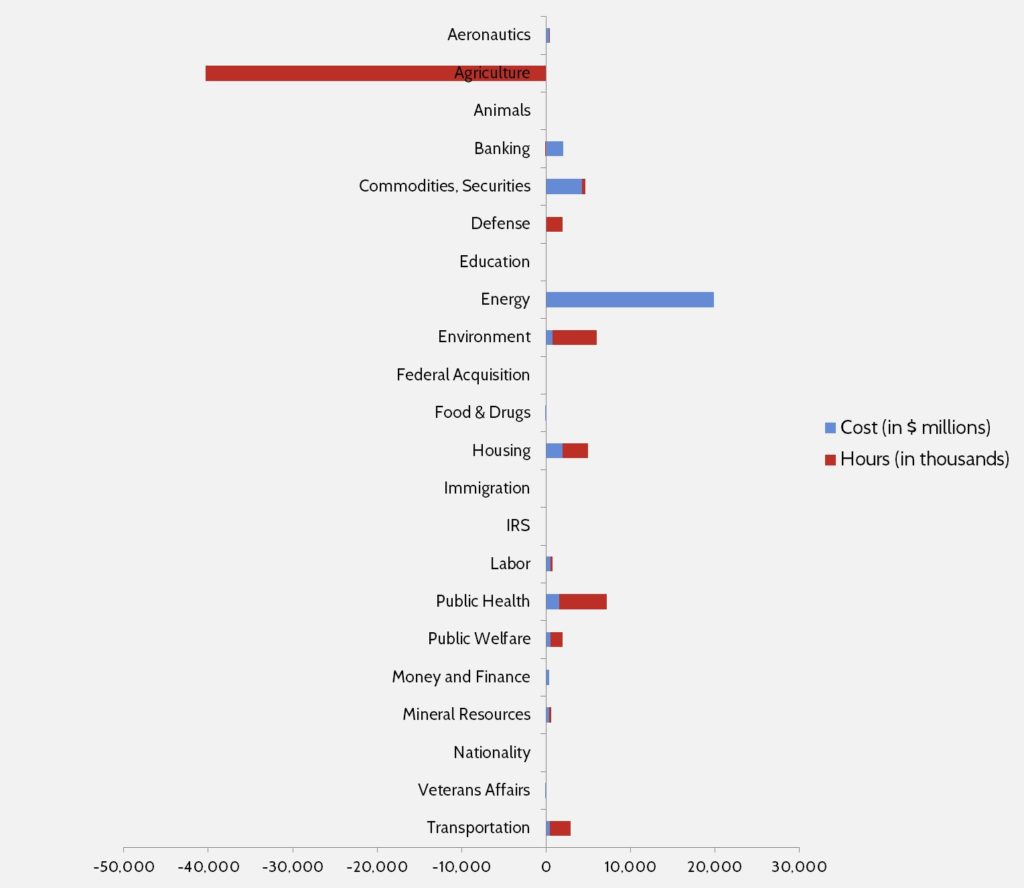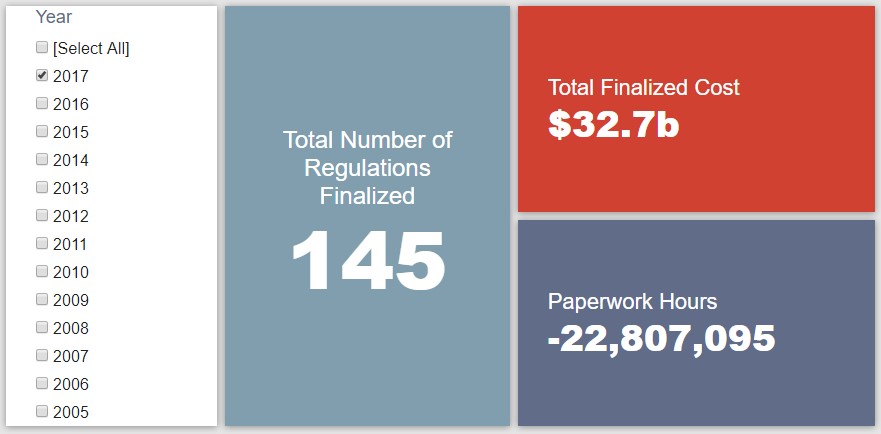Week in Regulation
August 7, 2017
A Quiet Start To August
A mundane series of rules from the Centers for Medicaid & Medicare Services (CMS) highlighted a mundane week in regulatory publication. The CMS rules, primarily transfer rules directing health care payments, did include a measure that cut regulatory costs though. In all, total net published costs came to $35.7 million against no monetized benefits. Agencies also published 659,242 hours of paperwork burdens. The per capita regulatory burden for 2017 is $458.
Regulatory Toplines
- New Proposed Rules: 32
- New Final Rules: 68
- 2017 Total Pages of Regulation: 36,619
- 2017 Final Rules: $32.7 Billion
- 2017 Proposed Rules: $113.9 Billion
The American Action Forum (AAF) has catalogued regulations according to their codification in the Code of Federal Regulations (CFR). The CFR is organized into 50 titles, with each title corresponding to an industry or part of government. This snapshot of final rules (a change from earlier versions) will help to determine which sectors of the economy receive the highest number of regulatory actions.
The most costly rule of the week was the CMS rule affecting payments to “Skilled Nursing Facilities.” The rule brings $29 million in costs, mostly from its 288,633 hours-worth of estimated paperwork. However, those burdens actually represent substantial reductions from the rulemaking’s proposed version. That version included 798,553 paperwork burden hours that would impose more than $60 million in regulatory costs.
Tracking Regulatory Modernization
As noted above, one of the CMS rules did cut regulatory burdens – albeit quite lightly. The rule regarding the “Inpatient Rehabilitation Facility Prospective Payment System” reduces certain reporting requirements resulting in reductions of $2.6 million and 36,879 hours of paperwork annually. However, the additional costs from the above rule on “Skilled Nursing Facilities” clearly outpace these savings, and thus the Department of Health & Human Services (HHS) now has net annual regulatory costs under Executive Order 13,771. Interestingly, another CMS rule would add $7.7 million to that tally, but the agency claims those are, “de minimis costs … and thus [the rule] is not a regulatory or deregulatory action for the purposes of Executive Order 13771.”
On regulatory budget implementation, below are the agencies that have accrued annual savings or new costs under the president’s one-in, two-out budget; proposed rules are not included:
- Defense: -$400 million
- Interior: -$360.37 million
- Education: -$100 million
- Labor: -$78 million
- Veterans Affairs: -$1.9 million
- HHS: $18.06 million
- EPA: $60 million
- Energy: $34 million
Many of these figures are the result of CRA resolutions of disapproval. Given their historic regulatory output, AAF can predict that Defense, Interior, and Education will likely meet the goal of $0 in net regulatory costs by the end of this fiscal year.
Affordable Care Act
Since passage, based on total lifetime costs of the regulations, the Affordable Care Act has imposed costs of $53 billion in final state and private-sector burdens and 176.9 million annual paperwork hours.
Dodd-Frank
Click here to view the total estimated revised costs from Dodd-Frank; since passage, the legislation has produced more than 74.8 million final paperwork burden hours and imposed $38.9 billion in direct compliance costs.
Total Burdens
Since January 1, the federal government has published $146.6 billion in compliance costs ($32.7 billion in final rules) and has cut 17.3 million paperwork burden hours (due to 22.8 million in reductions from final rules). Click below for the latest Reg Rodeo findings.












